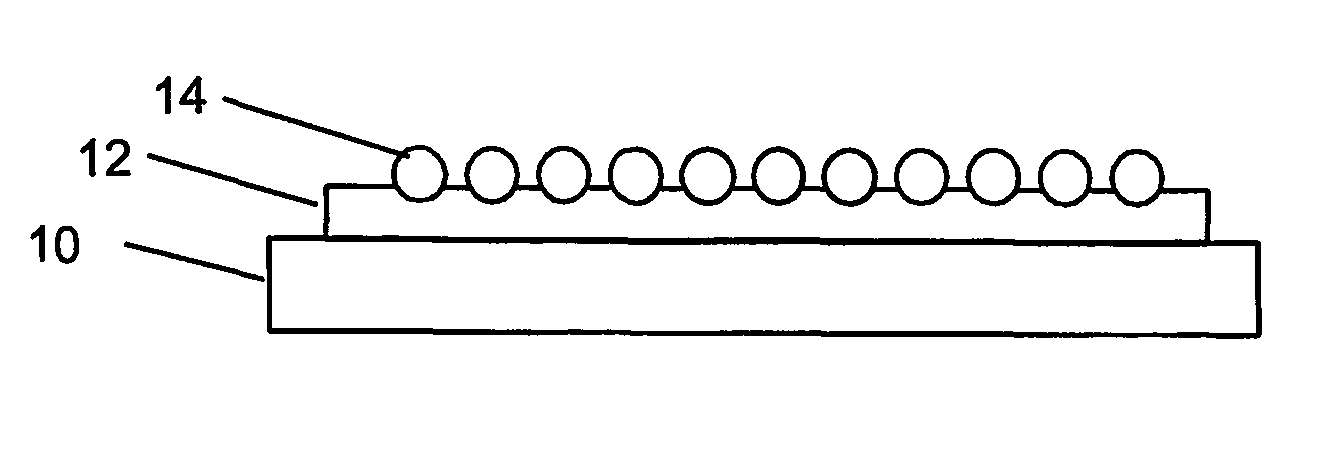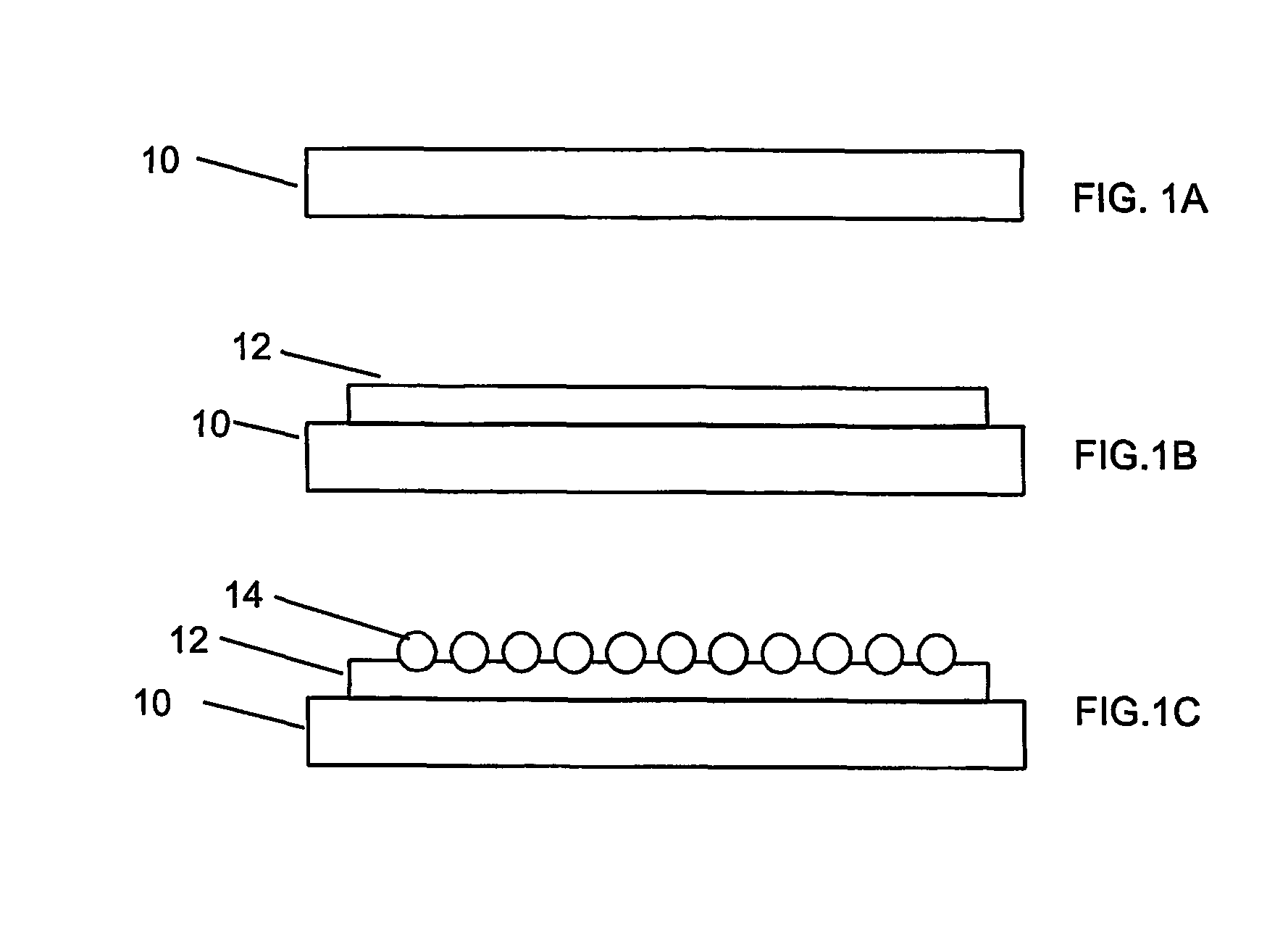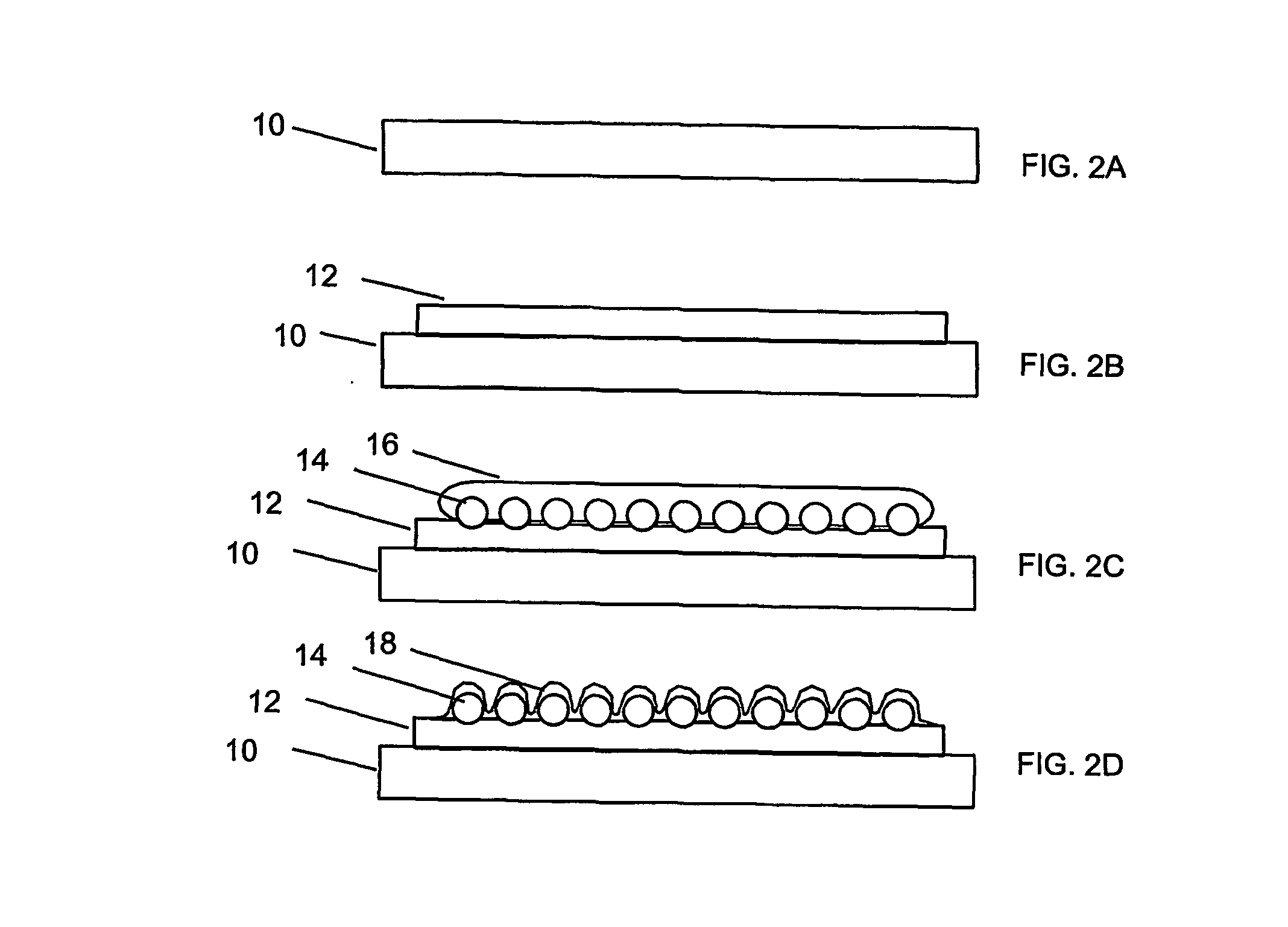Field emitter device
- Summary
- Abstract
- Description
- Claims
- Application Information
AI Technical Summary
Benefits of technology
Problems solved by technology
Method used
Image
Examples
first embodiment
[0028]FIGS. 1A-1C are schematic diagrams showing three successive stages of fabricating a cold cathode emitter in accordance with the present invention. In FIG. 1A, a substrate 10 provides a base upon which emission areas can be fabricated and this substrate 10 is a relatively flat area composed of glass or quartz. Next, as shown in FIG. 1B, a continuous cathode metal layer 12 is deposited upon the substrate. This relatively thin film comprises a metal alloy of approximately 80-120 nm depth (and that is matched to glass). The cathode metal layer 12 can be one of a group of conductive metal oxides such as indium tin oxide (ITO), zinc oxide (ZnO), aluminium-doped zinc oxide (ZnO:Al), indium-doped zinc oxide (ZnO:In), gallium- and aluminium-codoped zinc oxide (ZnO:Ga,Al) or one of a group of metal alloys such as aluminium-doped lithium (Li:Al), silver-doped lithium (Li:Ag), nichrome (Ni—Cr) or one of a group of metals such as silver (Ag), gold (Au), platinum (Pt) and nickel (Ni). A mon...
second embodiment
[0030]FIGS. 2A-2D are schematic diagrams showing four successive stages of fabricating a cold cathode emitter in accordance with the present invention. FIG. 2A is similar to FIG. 1A.
[0031] In FIG. 2B, the metal alloy cathode 12 used as the injecting back contact, contains a lithium component and / or an indium component and forms a low resistivity layer when disposed on a supporting substrate 10 and the resistivity value of the cathode 12 does not alter significantly with subsequent substrate processing at elevated temperatures in air. The cathode 12 is deposited on the chemically pre-cleaned substrate surface 10. Evaporation is the preferred deposition technique because it enables large area films to be deposited most easily, with high uniformity, and low levels of included gas. Alternatively, plasma-assisted deposition methods could be used but extra attention needs to be taken to ensure that the deposited metal does not contain large amounts of trapped gas such as argon which is kn...
third embodiment
[0037]FIGS. 3A-3G are schematic diagrams showing seven successive stages of fabricating a cold cathode emitter in accordance with the present invention. FIGS. 3A and 3B are similar to FIGS. 1A and 1B.
[0038] In FIG. 3C a lacquer 20 containing a material such as poly-vinyl acrylic is applied to the cathode 12 as a thin layer by spinning or spraying or printing. In FIG. 3D the lithiated nanodiamond 14 is applied to the tacky lacquer layer 20, preferably by a dusting method or alternatively by a contact transfer or air spray method. The laquer 20 is then air baked to remove the polymer to leave behind a monolayer of nanodiamond particles 14 on the cathode surface 12 (shown in FIG. 3E). In FIG. 3F an organo-metallic solution 16 (as previously described) is dispensed onto the nanodiamond layer 14 and upon subsequent air baking forms the structure of FIG. 3G.
[0039] The emitter structure of FIG. 4A illustrates a monolayer of nanodiamond particles 14 that may appear to be all the same size....
PUM
 Login to View More
Login to View More Abstract
Description
Claims
Application Information
 Login to View More
Login to View More - R&D
- Intellectual Property
- Life Sciences
- Materials
- Tech Scout
- Unparalleled Data Quality
- Higher Quality Content
- 60% Fewer Hallucinations
Browse by: Latest US Patents, China's latest patents, Technical Efficacy Thesaurus, Application Domain, Technology Topic, Popular Technical Reports.
© 2025 PatSnap. All rights reserved.Legal|Privacy policy|Modern Slavery Act Transparency Statement|Sitemap|About US| Contact US: help@patsnap.com



